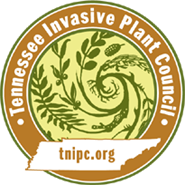Polygonum persicaria L.
Polygonum persicaria L.Spotted Ladysthumb
| Category |
|---|
| Forb/Herb |

Description
Stems
Stems erect from a taproot, 20 - 100 cm high, green or reddish, smooth except for slightly swollen at the distinct nodes; each node with a hairy ocrea (cylindrical membranous sheath surrounding the stem).Leaves
Leaves alternate (1 per node), narrowly elliptic, 2 - 15 cm long, greenish above and slightly paler below, usually with a reddish to brownish or purplish blotch near the middle; undersurface of leaf often slightly rough with tiny bumps, but never glandular or hairy, ocrea arising with the leafstalk at each node, membranous and somewhat papery, its surface covered with short, upward slanting hair and its upper margin ciliate with a fringe of short, erect hair about 1 - 2 mm long.Flowers
Flowers small, densely crowded into narrow cylindrical spikes 1 - 4.5 cm long at ends of stems and branches; each flower with 5 pinkish sepals 2 - 4 mm long, sometimes nearly white; fruits more or less enclosed by the sepals when mature, shiny, smooth, black, broadly ovate in outline, about 2 mm long; of 2 kinds, either rounded-triangular or flattened or somewhat lens-shaped in cross-section; the seed often slightly thickened near the middle. Seedling with cotyledons (seed leaves) about 8 - 12 mm long by 2 - 3 mm wide, tapered towards both ends, reddish on the undersurface; stem below the cotyledons often reddish to brownish-green; cotyledons soon withering on developing stems. Flowers from June to September.Fruit
Includes adhering calyx containing an achene.Images
Photo: Steve Dewey, Utah State University, Bugwood.orgMore images of Polygonum persicaria
Life History
Habitat
Tend to grow in organic rich soils with plenty of moisture. They can be found along stream banks, marsh edges, trail edges, and as a weed in cultivated crops. Ladysthumb can colonize disturbed sites, but they can carpet the ground, potentially outcompeting native plants.Origin and Distribution
Long used for medicinal properties, the seeds of some species of smartweeds were also used for food, and other parts of the plant used to make dyes. Several species probably arrived in North America with the first European settlers, brought as medicinal or food plants or as contaminants in crop seeds. Lady’s thumb is native to Europe.Spotted ladysthumb has been found in the following states/territories: USA (AK, AL, AR, AZ, CA, CO, CT, DC, DE, FL, GA, IA, ID, IL, IN, KS, KY, LA, MA, MD, ME, MI, MN, MO, MS, MT, NC, ND, NE, NH, NJ, NM, NV, NY, OH, OK, OR, PA, RI, SC, SD, TN, TX, UT, VA, VT, WA, WI, WV, WY), CAN (AB, BC, LB, MB, NB, NF, NS, ON, PE, QC, SK, YT), DEN (GL), FRA (SPM)
Synonyms
Persicaria maculata (Raf.) GrayPersicaria maculosa Gray
Persicaria persicaria (L.) Small, nom. inval.
Persicaria puritanorum (Fernald) Soják
Persicaria ruderalis (Salisb.) C.F. Reed
Persicaria ruderalis (Salisb.) C.F. Reed var. vulgaris (Webb & Moq.) C.F. Reed
Persicaria vulgaris Webb & Moq.
Polygonum dubium Stein
Polygonum fusiforme Greene
Polygonum minus auct. non Huds.
Polygonum minus Huds. var. subcontinuum (Meisn.) Fernald
Polygonum persicaria L. var. angustifolium Beckh.
Polygonum persicaria L. var. ruderale (Salisb.) Meisn.
Polygonum puritanorum Fernald
h2. Management Recommendations
These plants can be pulled up, preferably before seeds form. Plants can also be sprayed with glyphosate in summer.
Mechanical Controls
Tillage/cultivation is effective for control of P. persicaria seedlings. The same is true of hoeing in home gardens and similar areas that can be managed by hand. Repeated mowing which prevents seed production will reduce populations over time.Herbicidal Controls
Numerous herbicides are highly effective in controlling P. persicaria. However, in France from 1980, there were reports of biotypes of this weed resistant to Group C1/5 (photosystem II inhibitors) herbicides found in maize and other cropland. Research has shown that these particular biotypes are also resistant to atrazine and they may be cross-resistant to other Group C1/5 herbicides (Weed Science Society of America, 2003). Similar resistance to triazines has since been confirmed in the Czech Republic, New Zealand and the United States.Biological Controls
Although P. persicaria is susceptible to Arabis mosaic virus, no research has been undertaken on the development of biological control agents, whether viral or fungal. No arthropods known to attack this species specifically have been identified.Bibliography
USDA"Weedinfo.ca":http://www.weedinfo.ca/en/weed-index/view/id/POLPE
Kristek A, Kristek S, Antunovic M, 2004. Influence of fertilization and herbicides application on soil microflora and elements of sugar beet yield. (Utjecaj gnojidbe i primjene herbicida na biogenost tla i elemente prinosa ?ecerne repe.) Agriculture Scientific and Professional Review, 10(1):35-42.
Markovic M, Protic R, Protic N, 2008. Efficiency and selectivity of herbicides in maize (Zea mays L.). Romanian Agricultural Research, No.25:77-82.
NASD, 2002. Weed management after a flood - strategies for this year and next. Madison, Wisconsin, USA: University of Wisconsin Cooperative Extension
"CABI":http://www.cabi.org/isc/?compid=5&dsid=42691&loadmodule=datasheet&page=481&site=144
